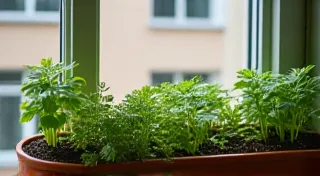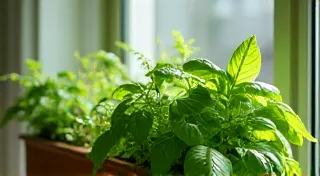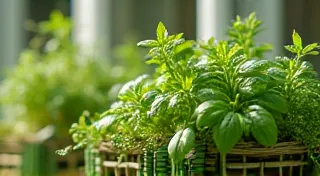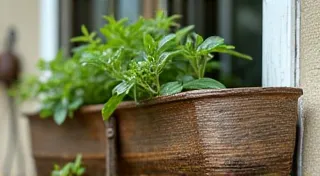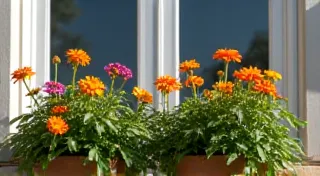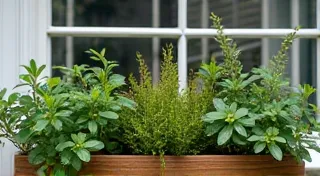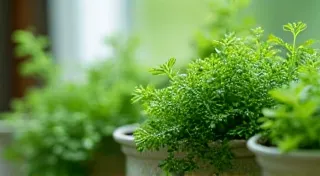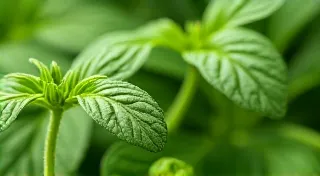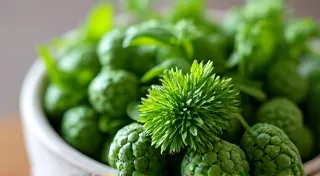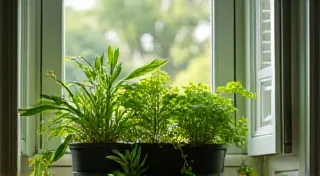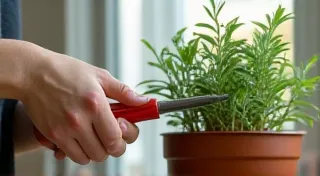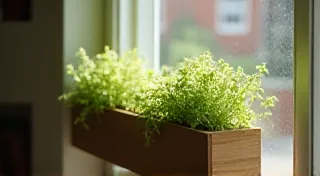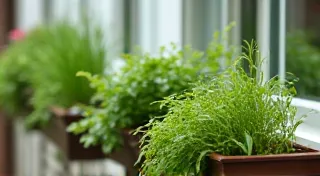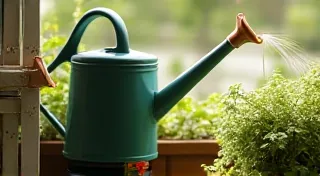Growing Culinary Herbs in Window Boxes: Aromatic Delights for Small Spaces
Imagine stepping onto your balcony or near your window, inhaling the intoxicating aroma of fresh basil, the gentle fragrance of rosemary, the subtle sweetness of mint, and the peppery zing of thyme. This dream is easily achievable with the rewarding art of window box gardening, specifically focused on culinary herbs. Whether you're a seasoned gardener or a complete novice, cultivating your own little patch of edible greenery can be surprisingly simple and immensely satisfying. This site is your complete guide to successfully growing your own herb garden, even in the smallest of spaces.
We're passionate about helping you transform your windowsill, balcony, or patio into a vibrant and flavorful oasis. Forget expensive supermarket herbs that lose their potency the moment they’re harvested. Growing your own culinary herbs in window boxes allows you to enjoy peak freshness and unparalleled flavor in your cooking. From the vibrant leaves of basil to the aromatic needles of rosemary, your dishes will be elevated with homegrown goodness. The sensory experience—the visual beauty, the fragrant aromas, and the exquisite tastes—is a small investment in your well-being and culinary creativity.
Maximizing Space and Style: Window Box Gardening for Every Home
The beauty of window box gardening lies in its versatility and accessibility. It's a fantastic solution for small space gardening, especially in urban environments. Whether you have a sprawling balcony or just a small windowsill, window boxes offer a contained environment, perfect for those with limited space. They’re portable, allowing you to move your herb garden to chase the sun or protect it from harsh weather. Plus, the visual appeal of overflowing window boxes adds a touch of charm and tranquility to any setting. We believe in the power of thoughtful garden design, even on a small scale. The aesthetic benefits alone are well worth the effort. Consider the psychology of scent – the calming effect of lavender, the stimulating aroma of rosemary – and how these scents can impact your mood and well-being. If you live in a small apartment, check out our guide: Window Box Herb Gardening for Small Apartments. The principles outlined there are key to maximizing space and visual appeal, regardless of your living situation.
Getting Started: A Beginner's Guide to Herb Gardening
Feeling overwhelmed? Don’t be! Our Beginner's Guide to Culinary Herbs in Window Boxes: Aromatic Delights for Small Spaces breaks down the basics, covering everything from choosing the right herbs to understanding their individual needs. We’re not just teaching you how to grow herbs; we’re fostering a connection with nature and empowering you to create something beautiful and delicious. For a more streamlined introduction, explore Beginner's Guide to Culinary Herb Window Box Gardening. Don't be afraid to experiment! Gardening is a learning process, and even experienced gardeners encounter challenges. View each setback as an opportunity to learn and refine your techniques. Starting with a few easy-to-grow herbs is a great way to build confidence and momentum.
Essential Considerations: Sunlight, Soil, and Watering
Successful herb gardening hinges on understanding a few key elements. Sunlight requirements are crucial; different herbs thrive in varying degrees of sun exposure. Sunlight Requirements for Culinary Herb Window Boxes delves into the specific needs of popular herbs, ensuring you place your window boxes in the optimal location. Consider the angle of the sun throughout the day and the impact of shadows from nearby buildings or trees. The right amount of sunlight is essential for photosynthesis, the process by which plants convert light energy into chemical energy. The foundation of a healthy herb garden is, of course, the soil. Choosing the Right Soil for Your Culinary Herb Window Boxes provides detailed guidance on selecting a suitable potting mix that provides excellent drainage and nutrients. Avoid using garden soil in window boxes, as it tends to compact and doesn't drain well. A good potting mix will be lightweight, porous, and rich in organic matter. And what about keeping your herbs hydrated? Watering Your Culinary Herbs in Window Boxes: Tips & Tricks provides practical advice on watering frequency, techniques, and recognizing signs of over or under-watering. Water deeply and less frequently, allowing the soil to dry out slightly between waterings. The frequency will depend on the weather, the type of herbs, and the size of the window box.
Top Herbs for Your Window Box Garden
The world of culinary herbs is vast and flavorful! Top 10 Culinary Herbs for Window Box Gardening: Flavor & Fragrance introduces ten of the most popular and versatile herbs, each offering unique culinary and aromatic benefits. Discover which herbs are best suited for your window box and how to combine them for maximum impact. Consider the flavor profiles and growth habits of different herbs when planning your combinations. For example, mint can be quite invasive, so it’s best to plant it in a separate container within the window box. Specifically, The Alchemy of Basil: Transforming Sunlight into Flavor explores the captivating world of basil, from its cultivation to its culinary uses. Basil's aroma alone is enough to transport you to the Mediterranean. Experiment with different varieties of basil, such as Genovese, Thai, and lemon basil, to expand your culinary horizons.
Maximizing Growth and Flavor: Fertilizing & Pruning
To ensure your culinary herbs flourish and deliver peak flavor, proper fertilization is key. Fertilizing Your Culinary Herb Window Boxes for Maximum Growth provides insights into feeding schedules and the right types of fertilizers to use. Organic fertilizers, such as compost and worm castings, are a great option for providing essential nutrients while improving soil health. Maintaining a tidy and productive herb garden also requires regular pruning. Pruning Culinary Herbs in Window Boxes for Bushier Growth explains how to shape your herbs, encourage branching, and maximize yields. Regular pruning not only keeps your herbs looking their best but also encourages them to produce more flavorful leaves.
Harvesting and Preserving Your Bounty
The ultimate reward of window box gardening is, of course, the ability to harvest fresh, flavorful herbs whenever you need them. Harvesting Your Culinary Herbs: Timing & Techniques provides guidance on knowing when to harvest, how to cut effectively, and preserving their vibrant flavor. Harvest herbs in the morning, after the dew has dried, when their essential oils are most concentrated. And when you have an abundance of herbs, Drying and Preserving Your Harvested Herbs from Window Boxes shows you how to extend their shelf life, ensuring you can enjoy the taste of summer long after the season has ended. Drying, freezing, and making herb-infused oils are all great ways to preserve your harvest.
Creative Design & Companion Planting
Beyond functionality, your window box herb garden can be a stunning visual addition to your home. Creative Window Box Garden Design Ideas for Herbs offers inspiration for arranging your herbs, creating visually appealing combinations, and incorporating decorative elements. Consider the height, color, and texture of different herbs when planning your design. Group plants with similar light and water requirements together. Best Companion Plants for Culinary Herbs in Window Boxes introduces plants that not only complement your herbs aesthetically but also benefit their growth and deter pests. Marigolds, for example, are known to repel nematodes, while chamomile attracts beneficial insects.
Specialty Herbs and Unique Cultivations
While staples like basil and rosemary are a must, don't be afraid to experiment with less common herbs. Lavender adds a soothing scent and beautiful color. Sage provides a savory depth to many dishes. Tarragon's subtle anise flavor is a delightful addition. Consider growing edible flowers like nasturtiums and pansies to add color and a unique flavor profile to your culinary creations.
Growing Herbs Indoors & Budget Tips
Bring the freshness inside with Growing Herbs Indoors in Window Boxes: A Guide. Even a small windowsill can become a thriving herb garden. Supplement natural light with grow lights if necessary. Looking for affordable options? Check out Budget-Friendly Window Box Herb Gardening. Start with seeds to save money. Repurpose containers for planting. Compost kitchen scraps to create your own fertilizer.
Addressing Common Challenges: Pests, Diseases, and Environmental Factors
Even with the best care, herb gardens can face challenges. Learn to identify common pests like aphids and spider mites and implement organic control measures. Ensure proper ventilation to prevent fungal diseases. Be mindful of extreme weather conditions and take steps to protect your herbs from frost or scorching heat. Understanding your local climate and adjusting your gardening practices accordingly is essential for success.
The Sensory Benefits and Holistic Wellness
Beyond the delicious flavors and beautiful aesthetics, herb gardening offers a wealth of sensory benefits and contributes to overall wellness. The act of gardening is therapeutic and stress-relieving. The aromas of fresh herbs can uplift your mood and stimulate your senses. Many herbs have medicinal properties that can support your health and well-being. Cultivating your own herb garden is an investment in your physical, mental, and emotional health.
The Sustainable Gardener: Environmentally Conscious Practices
Embrace sustainable gardening practices to minimize your environmental impact. Use organic fertilizers and pest control methods. Conserve water by using efficient irrigation techniques. Compost kitchen scraps and yard waste to enrich your soil. Encourage biodiversity by planting a variety of herbs and flowers. By gardening sustainably, you can contribute to a healthier planet.
The Global Herb Garden: Exploring Culinary Traditions
Expand your culinary horizons by exploring the herb gardens of different cultures. Learn about the traditional uses of herbs in Mediterranean cuisine, Southeast Asian cooking, and Latin American dishes. Experiment with new flavor combinations and broaden your understanding of the world’s culinary heritage.
The Joy of Sharing: Gifting Your Harvest
Share the bounty of your herb garden with friends and family. Gift cuttings, dried herbs, or homemade herb-infused products. Spreading the joy of gardening is a rewarding experience. Consider starting a small herb exchange with neighbors to diversify your collection and share knowledge.
The Ever-Learning Gardener: Resources and Continuing Education
Gardening is a lifelong learning journey. Stay informed about new techniques and discoveries. Join gardening clubs or online forums. Attend workshops and seminars. The more you learn, the more successful you’ll be.
The Future of Herb Gardening: Innovation and Trends
Explore emerging trends in herb gardening, such as vertical gardening, hydroponics, and microgreens. Embrace new technologies and techniques to optimize your growing practices. The possibilities are endless.
The Legacy of the Herb Garden: Passing on the Tradition
Share your knowledge and passion for herb gardening with future generations. Teach children about the importance of plants and the joys of growing your own food. The legacy of the herb garden can be passed down through families for generations to come.
The Ultimate Herb Gardening Resource
We hope this comprehensive guide has inspired you to embark on your own herb gardening journey. Remember to experiment, learn from your mistakes, and most importantly, enjoy the process. Happy growing! Don't forget to check out our website for detailed information on individual herbs, troubleshooting tips, and upcoming workshops.
Putting it All Together
Get inspired on how to use your harvest with Creative Uses for Your Window Box Herb Harvests and see how to design with intention with Verdant Tapestries: Weaving Culinary Herbs into Architectural Harmony.

